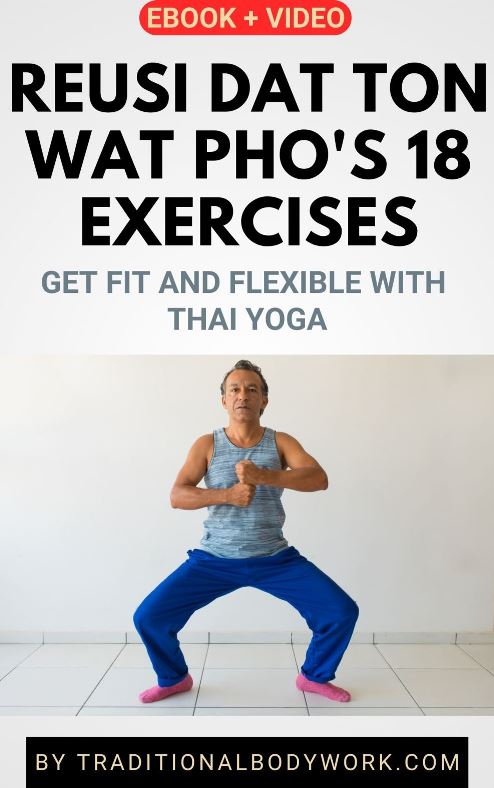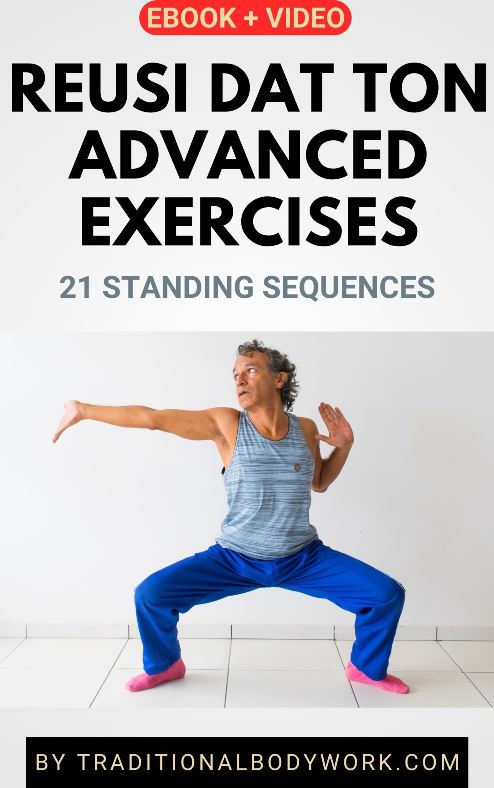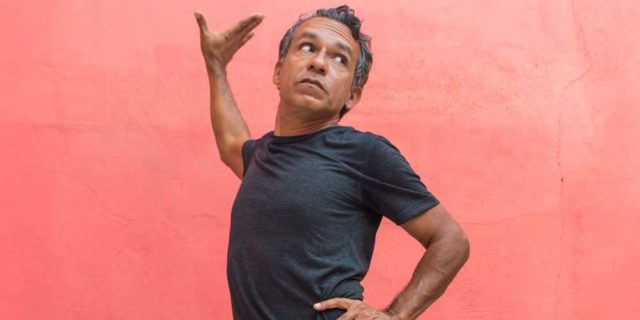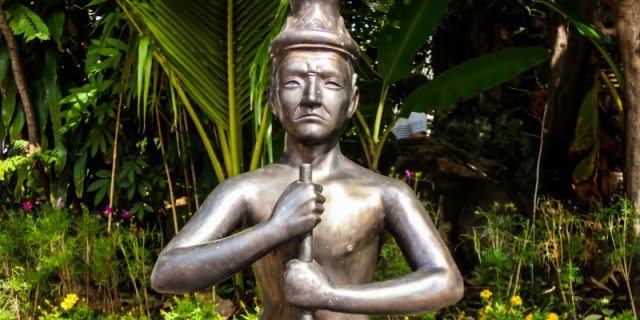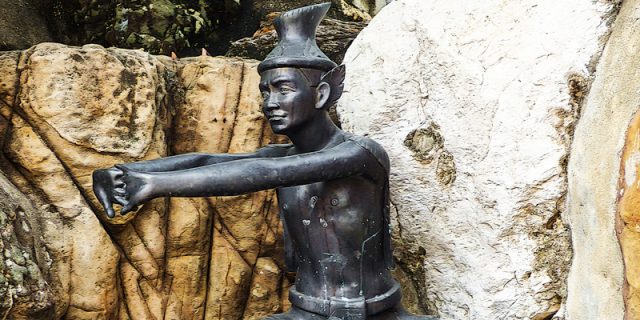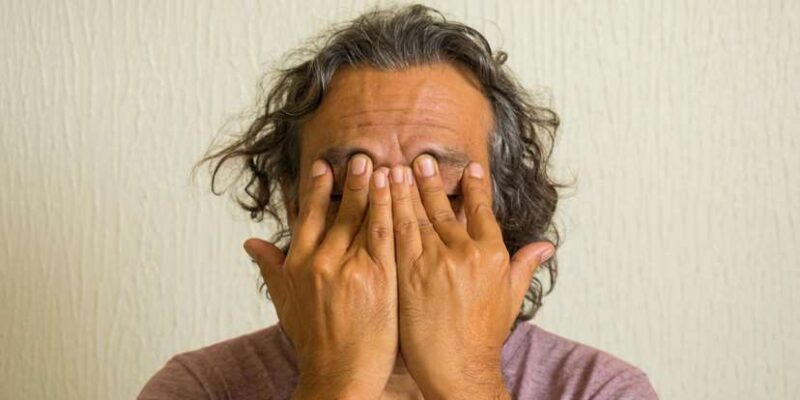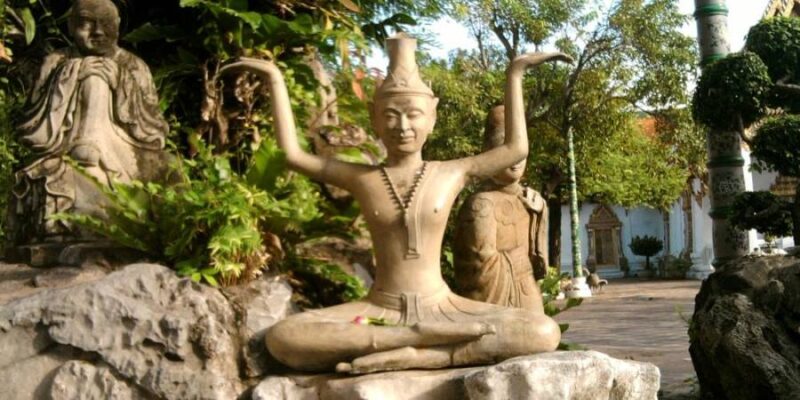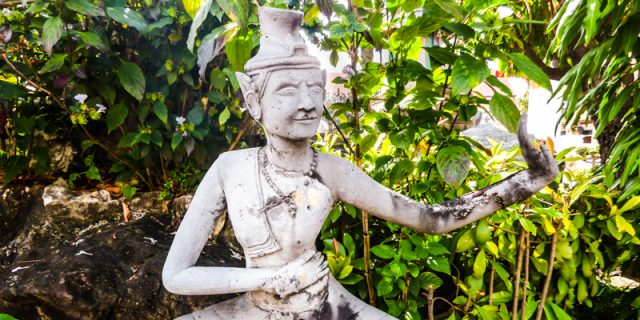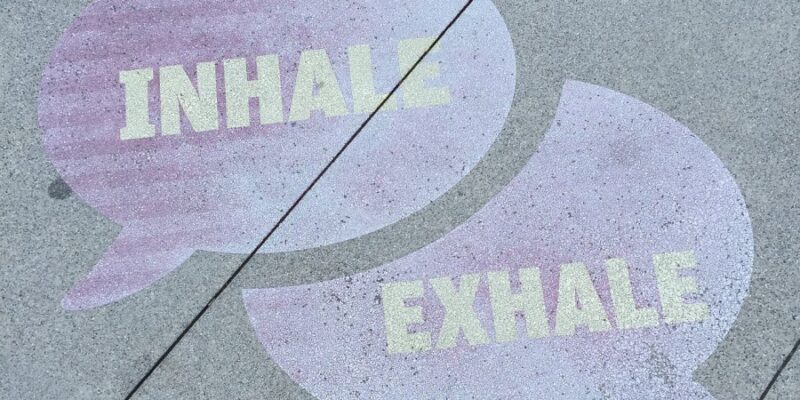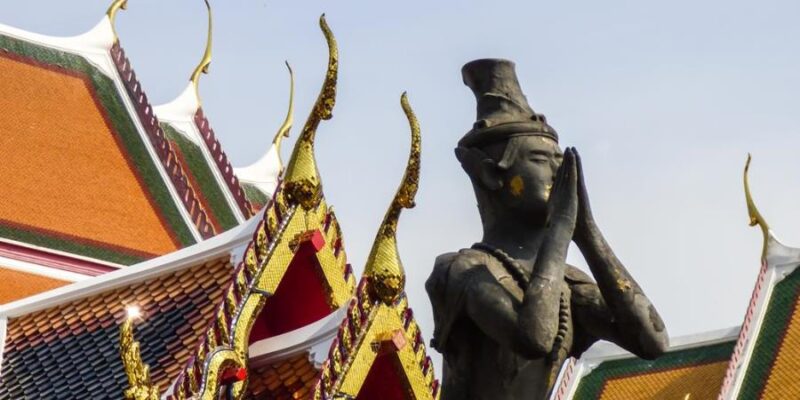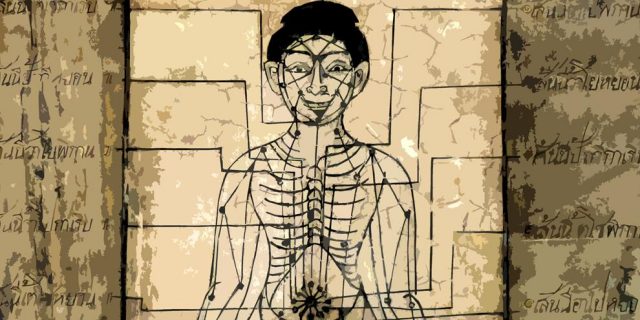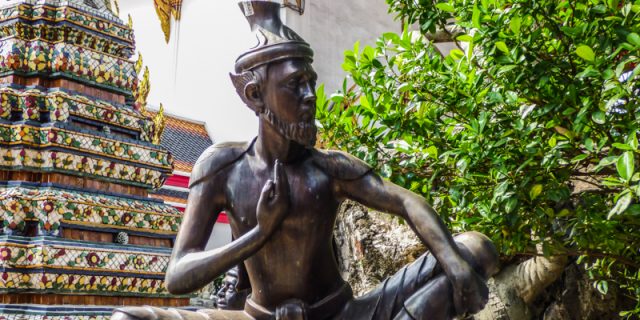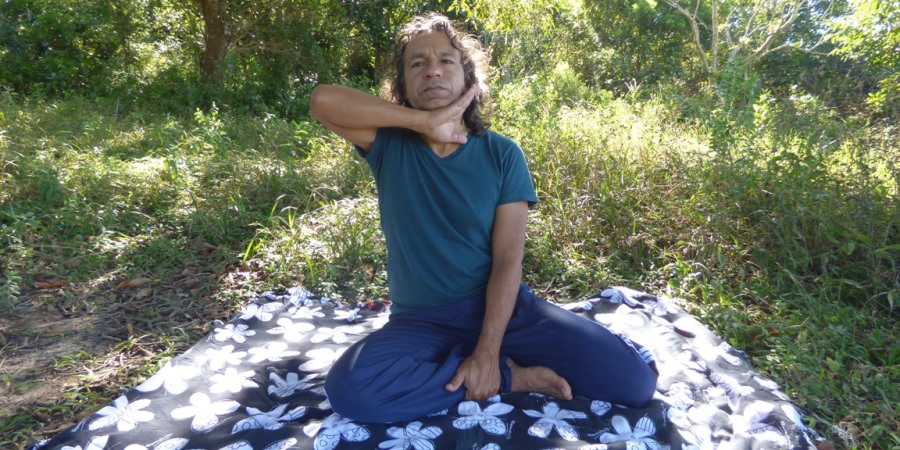
The set of 15 Basic Positions of the Contorted Hermit were developed by the Institute of Thai Traditional Medicine (ITTM), a department residing under the Thai Ministry of Public Health.
These exercises are perhaps better known as Traditional Thai Yoga, Reusi Dat Ton, Rue-Si Datton, Rusie Dutton, or Ruesri Dat Ton, to name the best known descriptions, yet additionally there are many more labels attached to this healing art. More about the naming conventions can be read in our previous article Finding Thai Yoga Reusi Datton Schools.
Table of contents:
⦿ Breathing Practice
⦿ Benefits of Ruesri Dat Ton
⦿ The 15 Exercises
⦿ Computer Animations
History of the Contorted Hermit
According to the ITTM there are originally 127 positions of the “Contorted Hermit” as recorded and documented in the 19th century by the Wat Phra Chetuphon School of Traditional Medicine, also better known as the Wat Pho Medical Massage School.
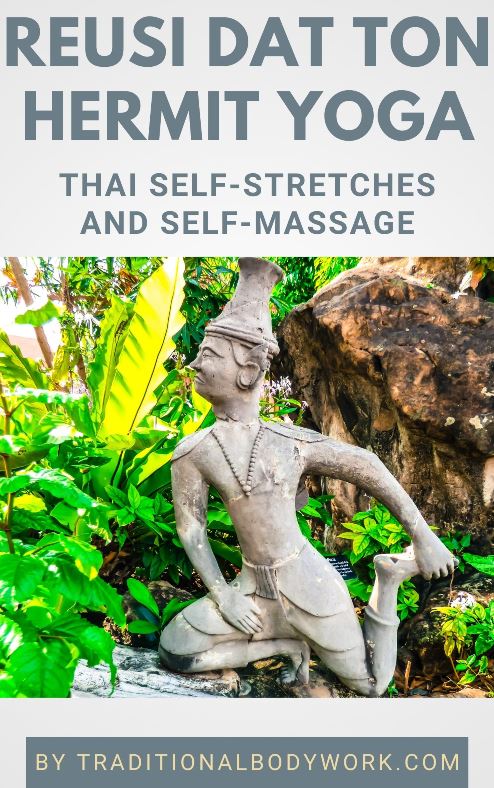
The Contorted Hermit is the Rishi, the Reusi, the Monk-Yogi that exercises these positions. These Reusis, as taught in the Thai cultural history, were ascetics living in the forests and mountains, even before the Buddhist era, devoting their lives to meditation and the search for spiritual enlightenment.
After sitting in meditation for many hours daily, the hermits needed to relax and stretch their bodies. The current idea is that the Contorted Hermit exercises originate from this practice. Moreover, by doing these exercises they would additionally strengthen their bodies, thus being able to meditate longer.
Another important goal was to attain longevity, and the legends tell that many hermits at the time lived longer than a hundred years.
“Contortion” or “Contorted” implies to make any part of body bend as needed by stretching, shrinking, and twisting it. Self-Massage is also part of the practice.
Reusi Dat Ton is used as a means to relax the body and mind, to relieve muscle and joint pains, and to heal sickness and disease. It’s thought that the hermits of the old days practiced these kinds of exercises for several hours per day.
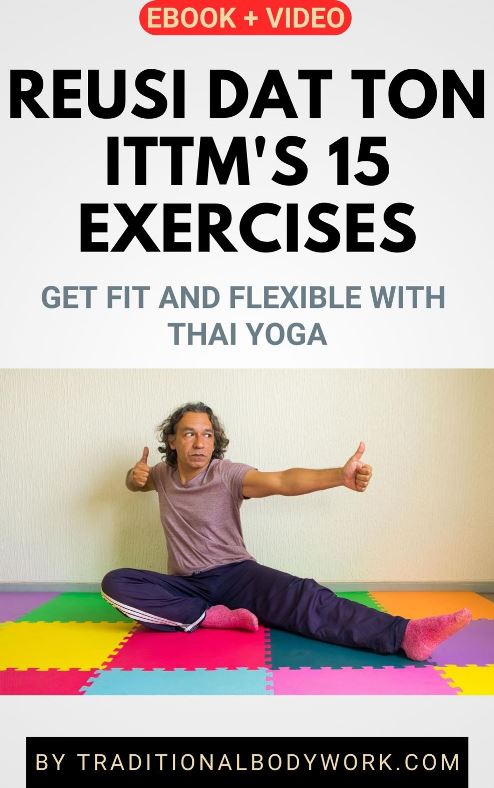
In the year 1995, the ITTM selected 15 basic positions from the total of 127. These positions, meant for the welfare of the general public, are a selection of standing, sitting, and lying positions which benefit us by balancing body and mind.
The chosen 15 positions have been analyzed by both conventional and modern medical studies for their effectiveness and efficiency, and are safe to do by young and old.
Mind also, at present, that the 15 contorted hermit exercises have been adjusted from the original Wat Pho records to safer methods of exercise, meaning that using full strength, power and deep sustained breath work while doing the exercises is avoided. They now rather focus on slow inhalation and exhalation techniques and proper body movement.
Breathing Practice
As for the breathing practice accompanying the various exercises, the ITTM advises the following:
Inhaling practice: breathe the air into your body deeply and slowly to expand your stomach, chest, ribs, and lungs, and raise your shoulders, holding your breath for a while which makes your stomach flatten a little bit and fully expands your chest.
Exhaling practice: slowly breathe the air out of your body as much as possible by flatting your stomach, ribs, and lower your shoulders.
Benefits of Ruesri Dat Ton
According to the ITTM, the Contorted Hermit exercises help awake, strengthen and relax your body and mind, as well as heal basic illnesses.
It furthermore helps to be able to move arms, legs and joints more naturally and flexibly, supports the respiratory system, improves a proper blood circulation in your body, keeps one fit, and works as preventive medicine promoting good health and longevity.
Done as a meditative practice it relieves the mind from frustration, stress and drowsiness.
The 15 Exercises
Below you find the 15 exercises as described by the ITTM. The set of 15 positions consists of 8 seated, 4 standing, and 3 lying exercises. It takes about 30 minutes to do the whole set.
1. For the face muscles (includes 7 postures).
1.1. To push hair.
1.2. To spread powder.
1.3. To wipe mouth.
1.4. To wipe chin.
1.5. To press under the chin.
1.6. To rub front ear and back ear.
1.7. To slap the occiput.
2. For discomfort of the wrist and scrotum problems.
3. For abdominal pain, ankle pain and headache.
4. For headaches, blur vision and general weakness.
5. For discomfort of the arms.
6. For low abdominal pain, scrotal distension, and knee problems.
7. For chronic muscular discomfort and suppression of sexual desire.
8. For arm movement.
9. For longevity of life.
10. For legs, shoulders, and knee trouble.
11. For chest trouble.
12. For cramps of the hands and legs.
13. For lower back pain, hip, and shoulder discomfort.
14. For blurred vision problems and general muscle cramps.
15. For numbness of the hands and feet.
Computer Animations
The Thai National Committee on Memory of the UNESCO World Program developed the Rusie Dotton’s animation website in order to give more recognition to the ancient body twist exercises. The digitized 15 Rusie Dotton sessions allow everyone who can access the Internet to be able to do the exercises easily and correctly.
You can find these animations at Rusie Dotton Thai Net. It’s all in the Thai language and the Reusi Datton exercises are done a bit “awkward” by the animated hermit, but it still gives a basic idea of how to perform the exercises. In any case, it’s fun to see how the Ruesi (the hermit) is depicted, and if you feel like, you can even download the individual exercises to view them offline.


